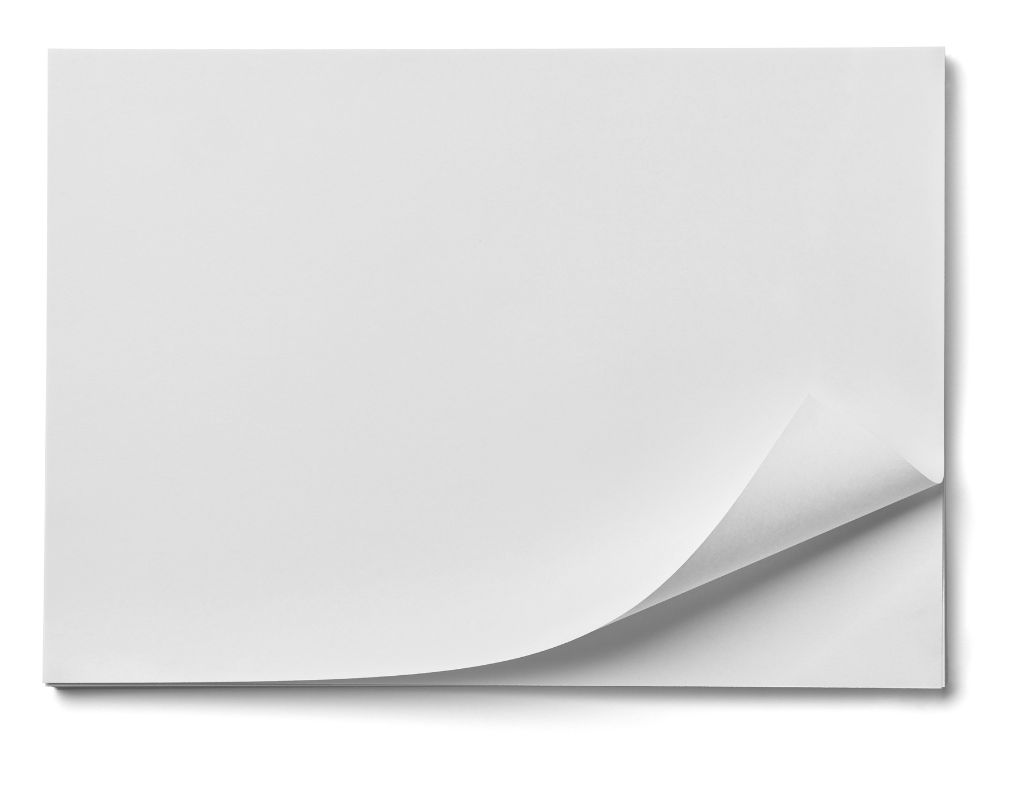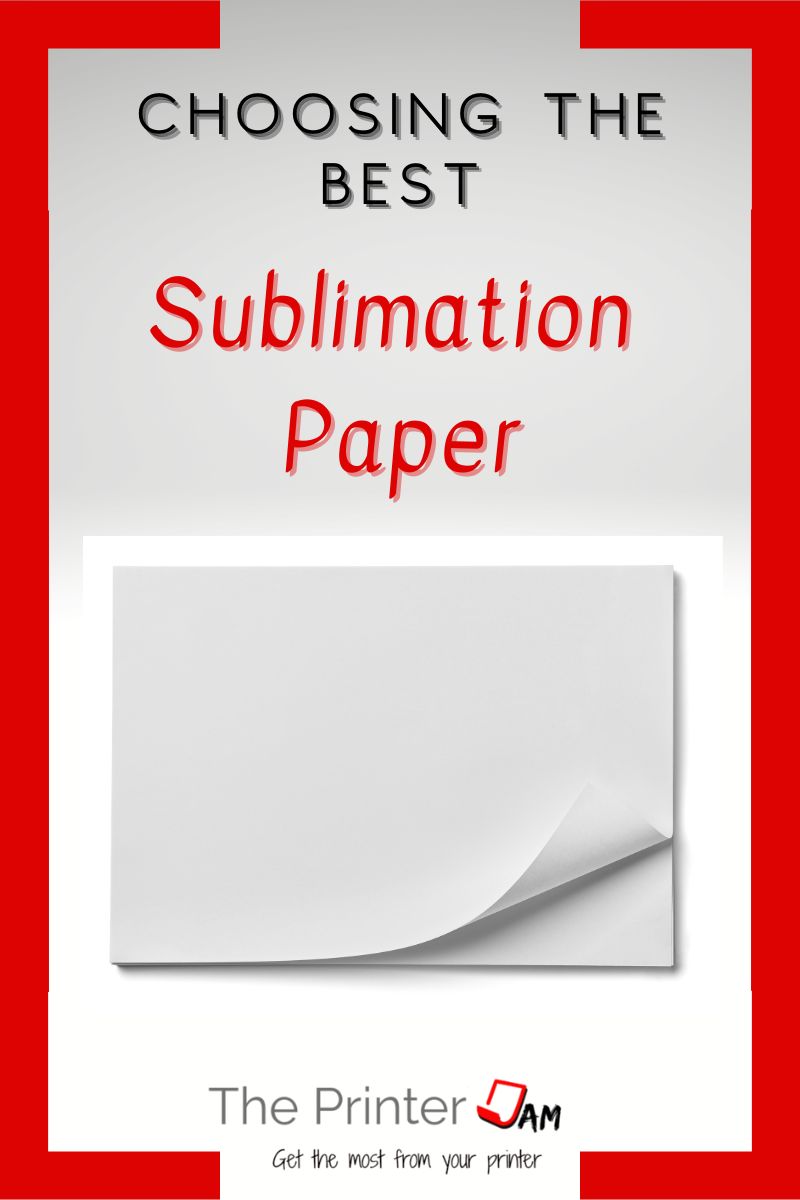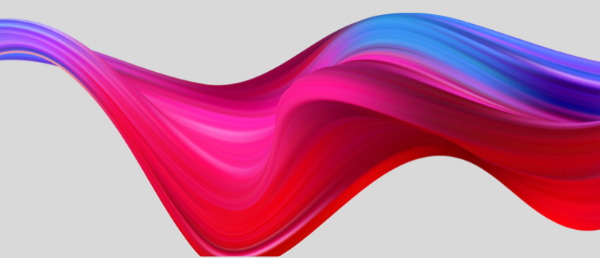
Sublimation paper plays a major role in the sublimation process. In my experience sublimation is a great way to get your designs from a computer to fabric or rigid material.
I’ve found the paper you choose for your sublimation projects is important. It has to work with sublimation ink and be compatible with the temperatures involved with sublimation.
While you can use many types of paper in a sublimation printer. If you want the best results you should use paper specifically designed for sublimation ink.
What is Sublimation Paper?
Sublimation paper comes in standard sizes but tends to be thicker than copy paper. It starts off as regular paper but what makes sublimation paper different is its coating. The coating not only makes the surface smoother but it contains resin and silicon.
Its resin coating prevents sublimation ink from wicking into the paper. When ink seeps into the paper I’ve seen it cause fuzzy text and a loss of finer details. The more ink that seeps into the paper means less ink will wind up on your blank.
The resin coating also prevents blowout during the heat transfer. It seals the paper so sublimation ink doesn’t bleed through the back of the paper. This means more sublimation ink is transferred to your substrate and less is wasted.
The silicon coating in sublimation paper prevents the paper from sticking to your blank. During heat transfer the paper can adhere to the blank. In my experience some blanks, such as wood, are more prone to this than others. The silicon coating minimizes the paper adhering to your substrates.
The coating found on sublimation paper produces results that can’t be obtained with regular copy paper. It ensures the most sublimation ink winds up on your blank instead of in the paper or blown out the back.
Sublimation Paper Uses
I use sublimation paper specifically made for sublimation printing. While you can print on it with regular ink, you can’t sublimate with regular ink.
When I tested sublimation paper with regular ink it did have better results than color laser paper. From what I’ve seen it’s not as good as photo paper with regular ink. Though photo paper is much more expensive and the coating will melt if you tried to sublimate with it.
As for sublimation, if you really want to save money by using other paper I’ve found you can use color laser paper. It’s much smoother and heavier than copy paper. I don’t recommend copy paper since for a few cents a page color laser paper is much better.
Color laser paper is a passable substitute for sublimation paper and won’t cost as much. Honestly, for most finished products I can’t tell the difference between sublimation paper and color laser paper.
There will be a noticeable difference for certain designs though. Photos of people, finer details, or small text won’t be as good with color laser paper. Also some colors may not be as bright.
If you want to save money then you should use color laser paper. I’ve found copy paper is as good as butcher to protect your heat press from blowout.
If you don’t want to worry about the results then sublimation paper is the best choice.
Is All Sublimation Paper the Same?
While there are several companies that make sublimation paper there really isn’t much difference between the papers they make. From the tests I’ve done most sublimation papers have the same results.
In my experience differences are with other things like packaging and instructions. Some I used did not include any instructions. While others include helpful instructions as well as a chart for time and temperature. From the ones I used most had a watermark or color so you know which side to use.
In my experience things like drying time and thickness really aren’t important for sublimation paper. I’ve found the only time anyone needs to worry about drying times is when using photo paper. Which can’t be used for sublimation anyway.
Also, sublimation ink dries faster than stock ink. No matter which paper you use I’ve never seen drying times be an issue with sublimation ink.
In my experience thickness is more about durability and feel. Thickness isn’t a factor for sublimation. In fact, when I use 120 GSM (grams per meter squared) I get better results than 125 GSM. Thicker paper is good for resumes and photos, but I’ve not seen heavier paper improve the final product for sublimation at all.
The thing i noticed was thicker paper helped with blowout in my heat press for certain images. But as for printing thickness has no impact (laser printers are another story). I’ve also noticed some printers tend to jam more with thicker paper.
Sublimation Paper Recommendations
Here are my top picks for sublimation paper. These papers include instructions, a chart, and mark the back so you know which side to use:
If you want to save money by not using sublimation paper, then don’t use copy paper. Pay a few cents more for color laser paper, in my experience it’s worth it.
This paper won’t have any instructions but you can use either side:
FAQ
You can use sublimation paper for sublimation. You can also use color laser paper for sublimation but not all designs will turn out the same.
Sure, it won’t damage your printer. But without sublimation ink the image won’t transfer.
Sublimation paper acts as a carrier for sublimation ink. Transfer paper comes in two different types. Transfer paper for light materials is similar to sublimation paper since it transfers standard ink to the substrate. While the transfer paper for dark materials closer to vinyl.
Not necessarily. Sublimation paper works best but you can use color laser paper.

The Copier Guy, aka Dave. I’ve worked on scanners, printers, copiers, and faxes over 23 years. When I’m not fixing them I’m writing about them. Although, I’m probably better at fixing them. I’ve worked with every major brand. As well as several types of processes. If it uses paper I’ve probably worked on one.











